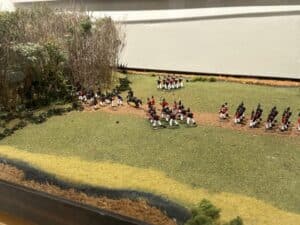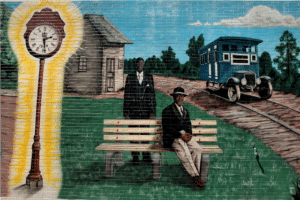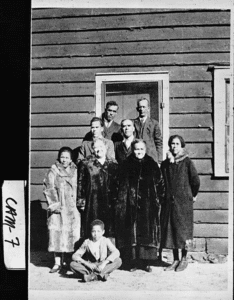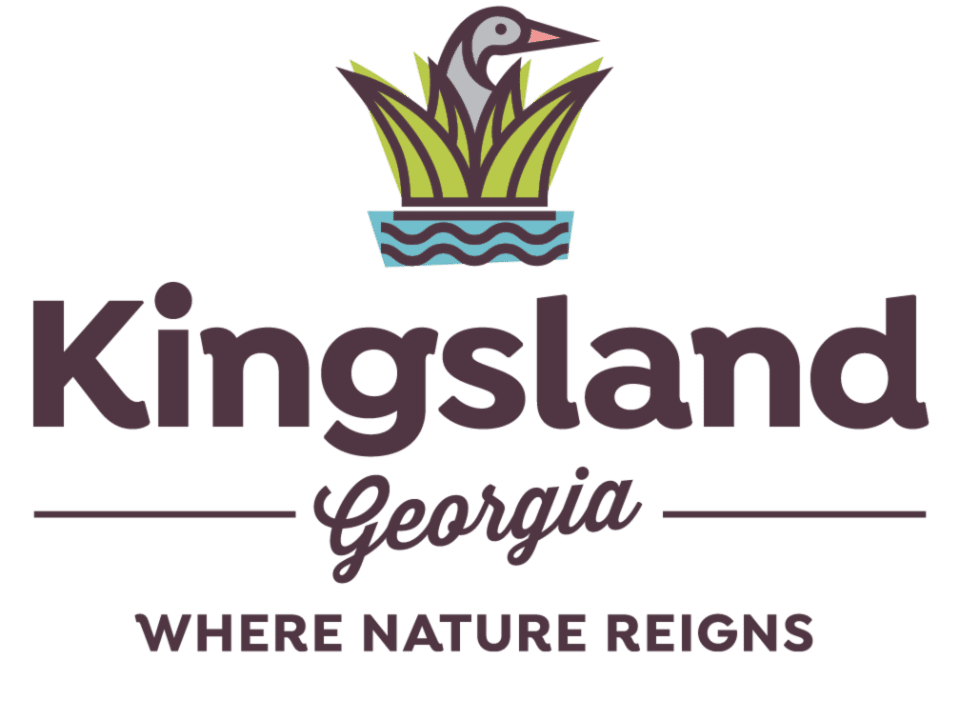
Point Peter: Discover Georgia’s Forgotten Battlefield of the War of 1812
Located in the southeastern corner of the state, Camden County played important roles during the War of 1812, serving as strategic points along the coastline

Located about 32 miles west of Kingsland lies the Okefenokee National Wildlife Refuge. The Okefenokee, derived supposedly from the Seminole word meaning “land of the trembling earth,” is the largest blackwater swamp in North America. Spanning approximately 700 square miles in southeast Georgia and north Florida, the swamp boasts an immense array of plant and wildlife species, including almost 175 species of birds and over 40 species of mammals. In 1937, the US Government purchased nearly 90% of the swampland when it established the National Wildlife Refuge to protect the lives and habitats of the swamp’s flora and fauna from the logging industry and other development efforts. Most of the land purchased needed improvement for it to be useful in sustaining wildlife. An all-African American Company of the Civilian Conservation Corp (CCC) was instrumental in creating an accessible Refuge and building facilities that, to this day, support almost 600,000 visitors annually.
Established in 1933, the Civilian Conservation Corps was one of President Roosevelt’s New Deal Programs. The program recruited and employed young men to work on infrastructure projects during the Great Depression, such as erosion and flood control, parks development, and forestry. Often called “Roosevelt’s Tree Army,” members of the CCC were 18-25, physically fit, unmarried, unemployed, and were required to send $25 of their $30-a-month paycheck home to help support their families during the Great Depression. Corpsmen lived in 200-person encampments, with enrollment periods of six months and the option to re-enlist. Although discrimination in the CCC was legally prohibited, nearly all camps were segregated. Each state’s population and unemployment level determined the number of men recruited for the Corp. In Georgia, administrators and state officials often discriminated against African Americans by preventing them from enrolling in the program in the early years of the CCC. Word of ongoing bias in the recruitment process led to the national head of CCC recruitment contacting the Georgia Governor and threatening to stop the program altogether in the state. The threat worked, and state officials reluctantly began enrolling African Americans into the program. Still, once African Americans began enlisting in the Corps and establishing work camps, they faced opposition from local communities who demanded camp removal because they didn’t want African Americans working or living near them. Outcries from local communities and Jim Crow policies of the day may be why the Corp chose the African American unit to work on the Okefenokee Swamp.
CCC Company 1433 (aka Camp Cornelia) contained 181 young men who began work on the Okefenokee Wildlife Refuge shortly after its formation in 1937. Tasked with transfiguring the swampland into a location suitable for wildlife habitats of the swamp and viable for human visitation, the company quickly began transforming the area. By mid-1938, they had constructed six truck bridges, a multi-use building, ten other structures, created a truck trail, installed a telephone line, and begun work on a topographic map of the region. Similar to their schedule at Fort Benning Army Base, their life at Camp Cornelia in the Refuge consisted of waking up to the company bugler at 6:30 am, exercising, having breakfast, policing the grounds, making their beds, cleaning the barracks, and standing for inspection all before 7:45 am when they then started their work day. Throughout the four years that the camp remained open (1937-1941), the valiant young men of CCC Company 1433 built vital infrastructure for the refuge, such as roads and bridges, cleared trails, planted trees, erected recreational facilities, and constructed firebreaks to prevent the spread of wildfires.
While the story of the men of CCC Company 1433 and their impact on the Okefenokee Swamp region may be unfamiliar to some, efforts are underway to make their story more broadly known. Recently, the non-profit Okefenokee Swamp Park received a federal grant to collect, preserve, and digitize the story of these courageous young conservationists. The information will be archived via an online database and hopefully used in the development of area 8th grade school curriculum.
References
Civilian Conservation Corps Legacy. (2023). CCC Camps Georgia. https://ccclegacy.org/ccc-camp-lists/ccc-camps-georgia/
CCC Legacy. (2023). CCC Brief History. Civilian Conservation Corps Legacy. https://ccclegacy.org/history-center/ccc-brief-history/
Davis, R. (2009). Civilian Conservation Corps. In New Georgia Encyclopedia. Retrieved Aug 20, 2020, from https://www.georgiaencyclopedia.org/articles/history-archaeology/civilian-conservation-corps/
Digital Public Library of America. (n.d.). Roosevelt’s Tree Army: The Civilian Conservation Corps. Camps for African Americans and Native Americans | DPLA. https://dp.la/exhibitions/civilian-conservation-corps/camps-african-american-native
Encyclopædia Britannica, inc. (2023, September 23). Okefenokee swamp. Encyclopædia Britannica. https://www.britannica.com/place/Okefenokee-Swamp
Gibbons, W. (2020). Natural History of the Okefenokee Swamp. In New Georgia Encyclopedia. Retrieved October 23, 2023, from https://www.georgiaencyclopedia.org/articles/geography-environment/natural-history-of-the-okefenokee-swamp
Hoak, Michael Shane, “The Men in Green: African Americans and the Civilian Conservation Corps, 1933-1942” (2002). Dissertations, Theses, and Masters Projects. William & Mary. Paper 1539626375. https://dx.doi.org/doi:10.21220/s2-h2yd-7p07
Kann, D. (2023, October 11). New project to explore history of Okefenokee’s black conservationists. AJC. https://www.ajc.com/news/new-project-to-explore-history-of-okefenokees-black-conservationists/4K64LGPRBNEUDB2GSW5XH5TD5U/
Living New Deal. Okefenokee Swamp Park facilities – Waycross, GA. (2016, August 14). https://livingnewdeal.org/sites/okefenokee-swamp-facilities-waycross-ga/
McKenny, S. (2023, October 17). Researchers working to preserve the Okefenokee Swamp. https://www.wtoc.com/2023/10/17/researchers-working-preserve-okefenokee-swamp/?outputType=amp
McNeil, A. (n.d.). Moving forward initiative: The African American Experience in the Civilian Conservation Corps. The Corps Network. https://corpsnetwork.org/moving-forward-initiative-the-african-american-experience-in-the-civilian-conservation-corps/
New Deal Network. (n.d.). African Americans in the CCC. https://web.archive.org/web/20160312174836/http://newdeal.feri.org/aaccc/index.htm
Okefenokee National Wildlife Refuge. (2018, February 26).We would like to honor the hardworking men who had a large part in building infrastructure for the newly established. [Status Update]. Facebook. https://www.facebook.com/okefenokeewildliferefuge
Okefenokee National Wildlife Refuge. (2018, February 27). Civilian Conservation Corps (CCC) Company 1433, had a daily routine, their days began with the company bugler at 6:30 a.m. [Status Update]. Facebook. https://www.facebook.com/okefenokeewildliferefuge
Okefenokee National Wildlife Refuge. (2018, February 28). By April 1938, the men of the Civilian Conservation Corps (CCC) Company 1433 had built 6 truck bridges, constructed a combination building. [Status Update]. Facebook. https://www.facebook.com/okefenokeewildliferefuge
Okefenokee National Wildlife Refuge. (2019, February 27). Civilian Conservation Corps Company 1433 helped to build much of the infrastructure at the Suwannee Canal Recreation Area during their. [Status Update]. Facebook. https://www.facebook.com/okefenokeewildliferefuge
Okefenokee National Wildlife Refuge. (2022, February 8). February is Black History Month and Okefenokee National Wildlife Refuge became what it is today from the Civilian Conservation Corps. [Status Update]. Facebook. https://www.facebook.com/okefenokeewildliferefuge
Okefenokee Swamp Park. (2023, October 11). The Okefenokee Swamp Park has received nearly $500,000 in federal funding to tell the stories of the Civilian Conservation Corps Company. [Status Update]. Facebook. https://www.facebook.com/okeswamp
Reverend Raphael Warnock. (2023, October 16). Senator reverend Warnock secures $497,000 for Okefenokee Swamp Project Preserving Park’s history, contribution of Black Americans ” reverend Raphael Warnock. https://www.warnock.senate.gov/newsroom/press-releases/senator-reverend-warnock-secures-497000-for-okefenokee-swamp-project-preserving-parks-history-contribution-of-black-americans/#:~:text=On%20Wednesday%2C%20the%20nonprofit%20Okefenokee,found%20the%20refuge%20in%201937
Roos, D. (2020, May 28). 6 projects the Civilian Conservation Corps accomplished. History.com. https://www.history.com/news/civilian-conservation-corps-projects
Salmond. (2008). The Civilian Conservation Corps, 1933-1942: A New Deal Case Study (Chapter 5). National Parks Service. https://www.nps.gov/parkhistory/online_books/ccc/salmond/chap5.htm
Trowell, C. T. (2022). Human History of the Okefenokee Swamp. In New Georgia Encyclopedia. Retrieved Oct 23, 2023, from https://www.georgiaencyclopedia.org/articles/geography-environment/human-history-of-the-okefenokee-swamp/
United States Fish Wildlife Service Cultural Resources. (n.d.). The United States Fish Wildlife Service Cultural Resources CCC. http://npshistory.com/brochures/nwr/ccc/ccc-project.pdf
Wotipka, S. (2023, March 29). How Racism Reshaped the Civilian Conservation Corps. Crosscut – Equity. https://crosscut.com/equity/2023/03/how-racism-reshaped-civilian-conservation-corps
U.S. Department of the Interior. (n.d.). Company 818 and Segregation in the Civilian Conservation Corps (U.S. National Park Service). National Parks Service. https://www.nps.gov/articles/000/company-818-and-segregation-in-the-civilian-conservation-corps.htm
U.S. Fish & Wildlife Service. Okefenokee National Wildlife Refuge. FWS.gov. (n.d.). https://www.fws.gov/refuge/okefenokee#:~:text=The%20swamp%20is%20considered%20the,bio%2Dindicators%20of%20global%20health.

Located in the southeastern corner of the state, Camden County played important roles during the War of 1812, serving as strategic points along the coastline

One influential family is the Joseph Family, led by Jacob Joseph, an African-American trailblazer who would help craft Kingsland’s religious and economic story for generations to come.

Early in her career, Harris traveled throughout the county to teach its African American citizens and served as its first home demonstration agent. Her service to educating local youth continued for 60 years.

"*" indicates required fields
By submitting this form, you are consenting to receive marketing emails from: Kingsland Visitors Bureau & Welcome Center, 1190 East Boone Avenue, I-95 Exit 3, Kingsland, GA 31548, US, https://kingslandcvb.wpengine.com
You can revoke your consent to receive emails at any time by using the SafeUnsubscribe® link, found at the bottom of every email. Emails are serviced by Constant Contact